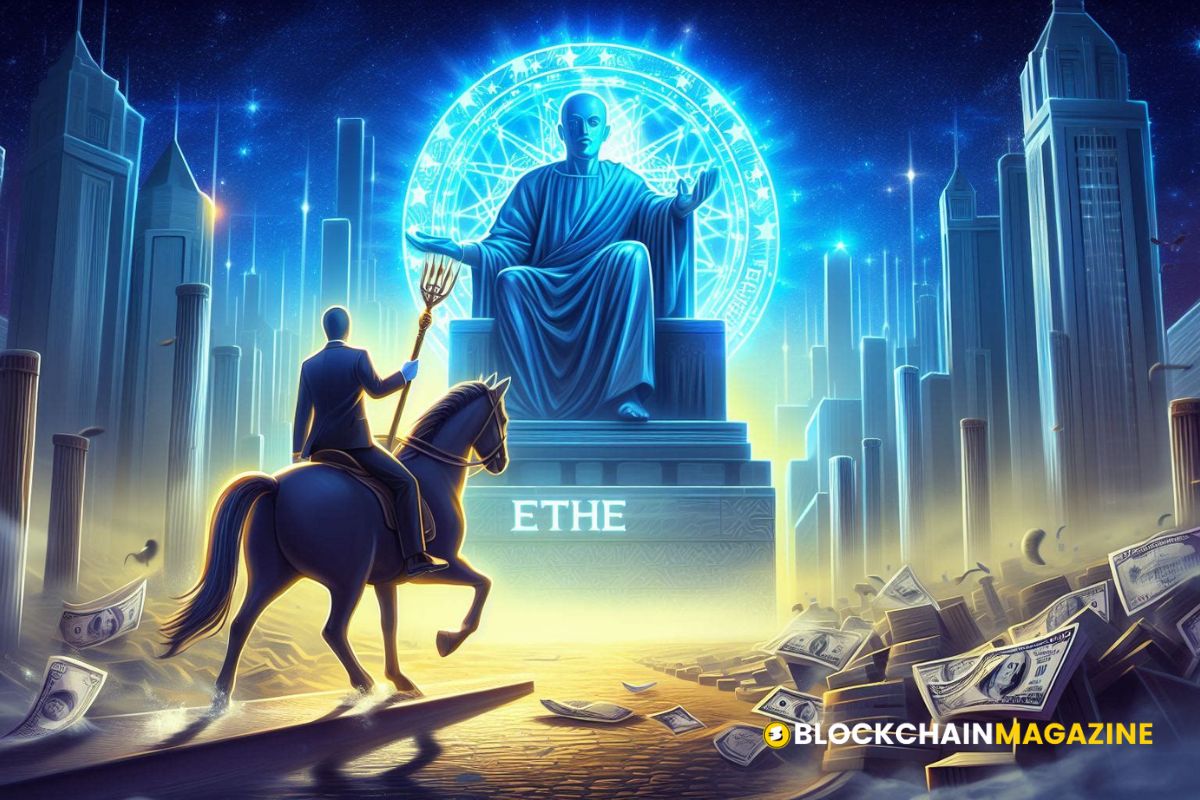The Downfall Of Polygon Matic? POL Crypto Token Analysis In Nutshell
So, there’s been a lot of chatter about Polygon’s big move from MATIC to POL lately. It’s been a wild ride for anyone following the crypto world. Polygon, once known as the Matic Network, has been a key player in making Ethereum more scalable and efficient. Now, with the switch to POL, things are shaking up again. This article dives into what this means for the crypto market and what the future might hold for POL.
Key Takeaways
- Polygon has shifted from MATIC to POL, marking a significant rebranding effort.
- POL aims to enhance scalability and efficiency within the Ethereum ecosystem.
- The transition has sparked varied reactions in the crypto market.
- POL is positioned as a multi-chain ecosystem, promoting interoperability.
- Future developments and strategic partnerships are key to POL’s success.
Understanding the POL Crypto Token
What is POL and How Does It Work?
POL is a cryptocurrency token that plays a pivotal role in the Polygon ecosystem, acting as the primary medium for transaction fees and network security. It’s an ERC-20 token, meaning it operates on the Ethereum blockchain, making it compatible with other Ethereum-based currencies. POL is essential for governing the network, allowing holders to participate in decision-making processes that affect the platform’s future.
The Transition from MATIC to POL
The shift from MATIC to POL marked a significant upgrade for Polygon. This transition was not just a rebranding but an enhancement of the token’s utility. POL introduces new functionalities, including a broader fee-earning structure, allowing users to earn from a variety of activities within the ecosystem. The transition completed in September 2024, aimed to expand Polygon’s capabilities as a multi-chain platform.
Key Features of POL
- Governance: POL holders have voting rights on crucial network decisions.
- Security: Used to secure the network through staking.
- Transaction Fees: POL is used to pay for transaction fees within the Polygon network.
- Interoperability: As an ERC-20 token, POL ensures seamless interaction with other Ethereum-based projects.
POL represents a new era for Polygon, enhancing its capabilities and expanding its reach in the blockchain space. This token is not just about transactions; it’s about building a robust and versatile ecosystem for future innovations.
The Evolution of Polygon: From MATIC to POL
Historical Background of Polygon
Polygon, originally launched as the Matic Network in 2017, was the brainchild of Jaynti Kanani, Sandeep Nailwal, Anurag Arjun, and Mihailo Bjelic. This project aimed to address Ethereum’s scalability issues by offering a Layer 2 scaling solution. In 2020, after a successful initial exchange offering on Binance, Matic Network rebranded to Polygon. This shift marked the beginning of a broader vision—supporting not just Ethereum but a wide range of blockchain networks.
Major Milestones in Polygon’s Journey
Since its inception, Polygon has achieved several significant milestones:
- Rebranding from Matic to Polygon: This wasn’t just a name change; it represented a strategic shift towards a more inclusive platform.
- Formation of Polygon Labs in 2023: This initiative was aimed at spearheading blockchain development and research.
- Transition from MATIC to POL in 2024: This was a pivotal move to enhance the token’s functionality and align with the evolving blockchain ecosystem.
The Rebranding to POL
The transition from MATIC to POL was completed in September 2024. This change wasn’t merely cosmetic; it introduced new functionalities and expanded use cases for the token. POL now serves as the native token of Polygon’s blockchain, supporting a range of activities from governance to securing the network. This rebranding signifies Polygon’s commitment to innovation and adaptability in the fast-paced crypto world.
The shift from MATIC to POL reflects Polygon’s ambition to remain at the forefront of blockchain technology, adapting to new challenges and seizing opportunities in the ever-evolving digital landscape.
The rebranding has not only redefined Polygon’s identity but also positioned it as a key player in the blockchain industry, ready to tackle the demands of Web3 and beyond.
Analyzing the Impact of POL on the Crypto Market
Market Reactions to POL’s Introduction
When POL made its debut, the market was buzzing with excitement. Investors and traders were eager to see how this transition from MATIC to POL would play out. Initial reactions were mixed, with some seeing it as a strategic move to enhance Polygon’s capabilities, while others were skeptical about the need for change. The price of POL experienced fluctuations as the community adjusted to the new dynamics. In the early days, volatility was a constant companion, but that’s not unusual in the crypto world.
Comparing POL with Other Crypto Tokens
POL stands out in the crowded crypto market for a few reasons. First, its role in the Polygon network gives it a unique edge. Unlike many tokens that serve a singular purpose, POL is designed to govern, secure, and facilitate transactions within its ecosystem. Here’s a quick comparison with some popular tokens:
| Feature | POL | Ethereum (ETH) | Binance Coin (BNB) |
|---|---|---|---|
| Governance | Yes | No | Yes |
| Transaction Fees | Yes | Yes | Yes |
| Network Security | Yes | Yes | Yes |
While Ethereum and Binance Coin are giants in their own right, POL’s integration within the Polygon network gives it a distinct place in the crypto space.
Future Predictions for POL
Looking ahead, the future of POL is filled with possibilities. Analysts predict that as the Polygon network continues to expand and integrate more features, the value and utility of POL could see significant growth. However, it’s important to consider potential risks such as regulatory changes or technological challenges that could impact its trajectory.
The transition from MATIC to POL isn’t just a rebranding; it’s a strategic evolution aimed at positioning Polygon as a leading player in the blockchain industry.
In summary, while POL has shown promise, its journey is just beginning. Investors and enthusiasts alike should keep a close eye on how this token evolves in the ever-changing landscape of cryptocurrency.
Technical Aspects of POL and Its Blockchain
The Role of POL in Polygon’s Architecture
POL is the beating heart of the Polygon network. It powers the network and ensures everything runs smoothly. By using POL tokens, users can pay transaction fees and engage in governance activities. This token is an ERC-20 token, which means it’s compatible with other Ethereum-based currencies. This compatibility is crucial because it allows POL to integrate seamlessly with the Ethereum ecosystem.
Consensus Mechanisms and Security Features
Polygon uses a modified proof-of-stake mechanism. This approach allows for quick transaction validation while maintaining security. Validators stake their POL tokens, which means they lock them up as a guarantee they will act honestly. If they do, they earn more POL as a reward. This system not only secures the network but also incentivizes validators to keep the network healthy.
Scalability and Efficiency Improvements
One of Polygon’s standout features is its ability to handle a high volume of transactions. This is achieved through its use of sidechains, which offload transactions from the main Ethereum blockchain. Sidechains are like express lanes on a highway, allowing traffic to flow smoothly without congestion. This design allows Polygon to process more than 32 transactions per second, making it a fast and efficient network.
Polygon’s architecture is designed to enhance scalability and efficiency, offering a robust framework for building interconnected blockchain networks.
Use Cases and Applications of POL
POL in Decentralized Finance (DeFi)
The POL token is making waves in the Decentralized Finance (DeFi) space by offering a robust platform for various financial services. Users can engage in lending, borrowing, and yield farming with significantly reduced fees compared to other networks. This is possible because POL operates on Polygon’s Layer 2 scaling solution, which provides faster transaction processing at lower costs. The integration of POL into DeFi protocols is enhancing liquidity and accessibility, making it a preferred choice for many crypto enthusiasts.
Cross-Chain Transactions and Interoperability
One of POL’s standout features is its ability to facilitate cross-chain transactions. This means users can transfer assets seamlessly between different blockchain networks, increasing the utility and reach of digital assets. The interoperability offered by POL is crucial for creating a connected blockchain ecosystem. As more networks adopt POL, the potential for cross-chain applications expands, allowing for innovative solutions in areas such as supply chain management and digital identity verification.
POL’s Role in Web3 Development
In the world of Web3, POL is carving out a niche by supporting decentralized applications (dApps) and services. Its compatibility with Ethereum-based projects ensures that developers can build and deploy dApps with ease. POL’s role in Web3 is not just limited to providing a platform for dApps; it also supports the creation of decentralized autonomous organizations (DAOs) and other governance structures. This makes POL a vital component in the ongoing evolution of the internet, where control and ownership are shifting back to users.
With POL, the vision of a decentralized internet is becoming more tangible. The token’s capabilities in DeFi, interoperability, and Web3 development are paving the way for a future where blockchain technology is seamlessly integrated into everyday life.
Challenges and Criticisms Facing POL
Potential Risks and Vulnerabilities
The transition from MATIC to POL hasn’t been all smooth sailing. Security concerns are always a hot topic in the crypto world, and POL is no exception. Some critics point out vulnerabilities in the network’s consensus mechanism, suggesting that it might not be as robust as needed to fend off malicious attacks. There’s also the issue of regulatory scrutiny. As governments worldwide start to tighten their grip on digital currencies, POL could face challenges that might affect its adoption and growth.
Community Concerns and Feedback
Polygon’s community has been vocal about certain aspects of POL. While many users appreciate the network’s low fees and fast transaction speeds, there’s a growing concern about the centralization of power. Some feel that decision-making is concentrated among a few key players, which could undermine the decentralized ethos that cryptocurrencies are supposed to uphold. Additionally, the transition phase has left some users confused, leading to a call for more transparency and communication from the Polygon team.
Addressing Environmental Impact
In the era of sustainability, the environmental impact of blockchain technologies can’t be ignored. POL, like many other tokens, faces criticism over its energy consumption. Although it operates on a proof-of-stake mechanism, which is generally more energy-efficient than proof-of-work, there are still concerns about its carbon footprint. The Polygon team has been urged to explore greener alternatives and make their operations more eco-friendly.
The journey from MATIC to POL is filled with both opportunities and obstacles. While the potential for growth is enormous, addressing these challenges head-on is crucial for the long-term success of the ecosystem. Balancing innovation with responsibility will be key to navigating the future of POL.
Investment Opportunities and Risks with POL
Evaluating POL as an Investment
Investing in POL can seem appealing due to its association with the Polygon network, which is known for its impressive scalability and efficiency. As a Layer 2 solution for Ethereum, POL offers the potential for high transaction speeds and low fees, making it attractive to developers and users alike. However, investors should be cautious and consider the volatility typical of cryptocurrency markets. POL’s role in governing and securing the Polygon network also adds a unique aspect to its value proposition, potentially increasing its appeal as a long-term investment.
Risk Factors to Consider
When considering investing in POL, it’s crucial to weigh the risks. Here are some potential challenges:
- Market Volatility: Like most cryptocurrencies, POL is subject to significant price fluctuations, which can lead to substantial financial gains or losses.
- Regulatory Risks: Changes in regulatory policies could impact the viability and legality of holding or trading POL.
- Technological Dependencies: As a Layer 2 solution, POL’s success is closely tied to Ethereum’s performance and stability. Any major issues with Ethereum could adversely affect POL.
Long-term Growth Potential
Looking ahead, POL’s growth potential hinges on its ability to continue enhancing the Ethereum network and expanding its use cases. The focus on interoperability and scalability positions POL favorably for future developments in the blockchain space. Additionally, strategic partnerships and ongoing improvements to the Polygon ecosystem could bolster POL’s standing in the crypto market.
POL’s journey is a testament to how innovation in blockchain technology can create new opportunities, yet it reminds us that with potential rewards come inherent risks.
The Future of POL and Its Ecosystem
Upcoming Developments and Upgrades
As we look ahead, Polygon’s roadmap is packed with exciting developments. The transition from MATIC to POL is paving the way for a more robust ecosystem. Upcoming upgrades are expected to enhance the network’s scalability and efficiency, making it even more appealing for developers. These improvements are crucial as they aim to support the growing demands of decentralized applications (dApps) and Web3 projects.
POL’s Vision for the Blockchain Industry
Polygon is not just about technology; it’s about a vision for the future. The team envisions a world where blockchain technology is accessible to everyone, enabling seamless transactions and interactions across different platforms. POL aims to be at the forefront of this transformation, providing the tools and infrastructure necessary for a decentralized future.
Strategic Partnerships and Collaborations
Partnerships play a significant role in Polygon’s strategy. By collaborating with various blockchain projects, Polygon enhances its network’s capabilities and reach. These partnerships are not only about technology but also about building a community that supports innovation and growth. Expect to see more collaborations that will expand POL’s influence in the crypto space.
As POL continues to evolve, its impact on the blockchain industry could be profound, driving new levels of innovation and adoption.
Conclusion
So, what’s the deal with Polygon and its POL token? It’s been a wild ride, for sure. Polygon started out as MATIC, and over the years, it’s evolved into something much bigger. The whole idea was to make Ethereum work better, faster, and cheaper, and in many ways, it has. But like anything in the crypto world, it’s not all sunshine and rainbows. There have been ups and downs, and the future is still a bit of a question mark. Will POL continue to thrive, or will it face more challenges? Only time will tell. For now, it’s a fascinating piece of the crypto puzzle, and whether you’re a fan or a skeptic, it’s worth keeping an eye on.
Frequently Asked Questions
What exactly is the POL token?
POL is a digital token used on the Polygon network. It helps in managing and securing the network and is also used to pay for transactions.
How did Polygon change from MATIC to POL?
Polygon started as MATIC, but in October 2023, they began changing it to POL. This change was completed by September 2024.
What makes POL different from other crypto tokens?
POL is unique because it is part of the Polygon network, which is a Layer 2 solution for Ethereum, helping to make transactions faster and cheaper.
What are the main uses of POL?
POL is mainly used to pay transaction fees, secure the network, and allow holders to vote on changes in the Polygon network.
Why is Polygon important for Ethereum?
Polygon helps Ethereum by making it more scalable. It allows for faster and cheaper transactions, which is crucial for Ethereum’s growth.
What are the risks involved with investing in POL?
Like any crypto, investing in POL comes with risks such as market volatility and potential changes in regulations.
Stay informed with daily updates from Blockchain Magazine on Google News. Click here to follow us and mark as favorite: [Blockchain Magazine on Google News].
Get Blockchain Insights In Inbox
Stay ahead of the curve with expert analysis and market updates.
latest from tech
Disclaimer: Any post shared by a third-party agency are sponsored and Blockchain Magazine has no views on any such posts. The views and opinions expressed in this post are those of the clients and do not necessarily reflect the official policy or position of Blockchain Magazine. The information provided in this post is for informational purposes only and should not be considered as financial, investment, or professional advice. Blockchain Magazine does not endorse or promote any specific products, services, or companies mentioned in this posts. Readers are encouraged to conduct their own research and consult with a qualified professional before making any financial decisions.

 Bitcoin
Bitcoin  Ethereum
Ethereum  XRP
XRP  Tether
Tether  Solana
Solana  Dogecoin
Dogecoin  USDC
USDC  Cardano
Cardano  Lido Staked Ether
Lido Staked Ether  TRON
TRON  Avalanche
Avalanche  Chainlink
Chainlink  Sui
Sui  Stellar
Stellar  Shiba Inu
Shiba Inu  Wrapped stETH
Wrapped stETH  Hedera
Hedera  Toncoin
Toncoin  Wrapped Bitcoin
Wrapped Bitcoin  Polkadot
Polkadot  WETH
WETH  Litecoin
Litecoin  Bitcoin Cash
Bitcoin Cash  Uniswap
Uniswap  LEO Token
LEO Token  Pepe
Pepe  Bitget Token
Bitget Token  Hyperliquid
Hyperliquid  Wrapped eETH
Wrapped eETH  NEAR Protocol
NEAR Protocol  USDS
USDS  Ethena USDe
Ethena USDe  Aptos
Aptos  Internet Computer
Internet Computer  Aave
Aave  POL (ex-MATIC)
POL (ex-MATIC)  Ethereum Classic
Ethereum Classic  Monero
Monero  Render
Render  Bittensor
Bittensor  Cronos
Cronos  Algorand
Algorand  Mantle
Mantle  Artificial Superintelligence Alliance
Artificial Superintelligence Alliance  MANTRA
MANTRA  Filecoin
Filecoin  Dai
Dai 



